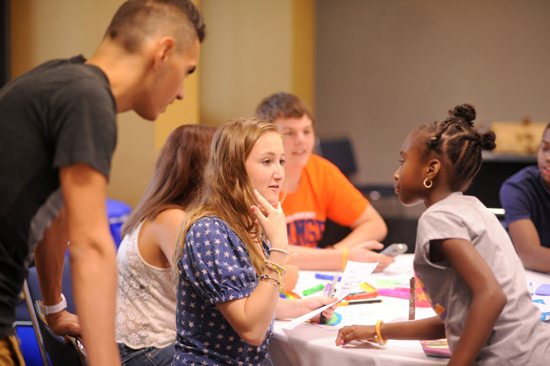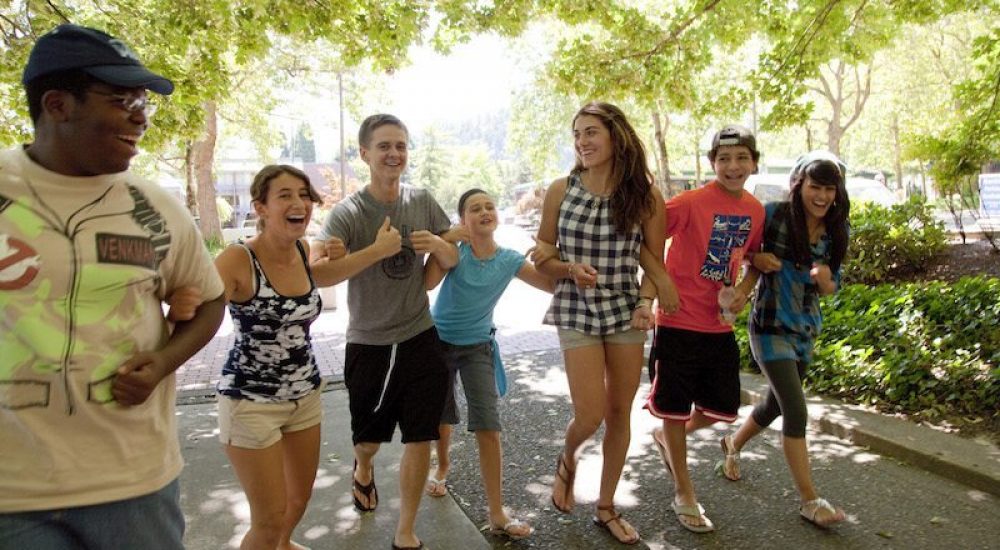Although the facts are alarming, conveying the importance of wellness to children can be challenging.
Childhood obesity has almost tripled in children and adolescents in the past 30 years and today approximately one out of three children and adolescents in the United States is overweight or obese. Even more alarming, there are significant racial and ethnic disparities in obesity prevalence among U.S. children and adolescents.
Research shows a strong link between a young person’s practice of healthy habits, including a good diet and regular physical activity, and an improvement in their overall life outcomes. Wellness is also an opportunity for children to relate to the larger world and see how their daily experience compares to others. Providing young people with an opportunity to take a leadership role in assessing and taking action on the most critical health issues of their community provides an opportunity for them to not only improve their own personal health, but also contribute to solving some of the world’s most pressing issues.
Getting the Conversation Started with a River Made of Tape
Here’s a quick activity to start the conversation and help children (and adults) think about the contributing factors to health in their community:
- Start by drawing a large river on a big sheet of paper. You can use a blue marker or even blue painters tape. I used glitter tape once that students loved.
- Next ask students, “What do you call the smaller rivers that feed into a larger river?” Hopefully, you’ll get “tributary” as a response.
- Explain that our communities are like rivers: many things contribute to how healthy they are. My colleague John and I sometimes call these “contributaries” (insert laughter here).
- Next, ask for examples of contributing factors. Typically when I Iead this activity I hear things like “safety,” “pollution,” “access to healthy food,” “transportation,” and “public parks” or “playgrounds.”
This simple yet effective activity is an interactive way to help students begin to think about the different facets of their community and provides a bridge to many common issues that communities face. Encourage students to think about how these factors change depending on where a person lives. If you have a room of children from different communities, have them compare and share.
As children begin to identify community challenges and opportunities, you can dive deeper and make global connections in each of these topic areas. Below are just a few opportunities.
Food Insecurity and Hunger
One issue to explore is local food access and the connection to the issue of global hunger. Here are a few ways to get started:
- Use the Food Research and Action Center’s (FRAC) resources and reports to understand food insecurity.
- Leverage available national and state level data and the regular FRAC digest.
- Compare international hunger data and issues using World Food Program resources for students and teachers, including country maps.
- Explore our new article, “The Role of Out-of-School Time in Reducing Hunger and Preventing Obesity.”
Nature and the Environment
A second topic to explore is the relationship between health, nature and environmental issues:
- Use interactive nutrition enrichment programs like Food and Fun and empowerME4Life to encourage children to learn about the importance of fruits and vegetables and whole grains.
- Leverage Nature Conservancy resources on global agriculture to help children understand the connection between conservation and food.
- Encourage students to self-organize and plan events for World Water Day and World Food Day. Both days provide an opportunity for students to see how their local experience can drive international movements.
Sport and Youth Development
The availability of organized sports is another topic to consider:
- Philadelphia Youth Sports Collaborative and Up2Us have resources to explore the role of teams in creating community and helping children stay active.
- International Day of Sport for Development and Peace can be explored for global connections.
Service Learning and Community Action
As you lead the river activity, encourage students to address the challenges they identify using service learning:
- Use the planning guide provided by the Jane Goodall Institute’s Roots & Shoots youth-led community action and learning program. Through the program, young people assess their community, prioritize challenges, and create an action plan.
- Youth Service America also has topic specific planning guides (such as childhood obesity) for Global Youth Service Day (GYSD), and grant opportunities for youth-led action. GYSD is the largest service event in the world and the only one dedicated to the contributions that children and youth make 365 days of the year.
Youth Voice and Dialogue
- Activities like PhotoVoice are additional opportunities for students to document wellness challenges and opportunities in their community.
- Imagine students equipped with cameras (even just camera phones) with a critical eye to how the physical environment impacts their health. How can youth documenting availability of bike lanes, sidewalks or even the abundance of corner stores to help them understand that where a person lives impacts her ability to live a healthy life?
- The University of Kansas Community Tool Box has advice on starting a PhotoVoice project and Active Living Research has additional resources on urban design, transportation and parks.
- Designed to Move further explores the global challenge of physical inactivity.
- Encourage students to share their findings with parents, local government officials and teachers. Perhaps student clubs can work together on action planning.
- Further raise youth voice locally by hosting your own local Youth-Hosted Forum student discussion panel on health and wellness issues.
 Wellness education provide a tremendous opportunity to help young people connect with issues that they are passionate about. By helping students understand the far reaching impact of local wellness issues, young people are positioned to raise their voices and take action.
Wellness education provide a tremendous opportunity to help young people connect with issues that they are passionate about. By helping students understand the far reaching impact of local wellness issues, young people are positioned to raise their voices and take action.
From food insecurity to the environment and sport, a multitude of resources and organizations exist to support the effort to help young people think locally and globally.
For breakfast, I had several cups of coffee with toast and an orange.
Author profile: @danielh
